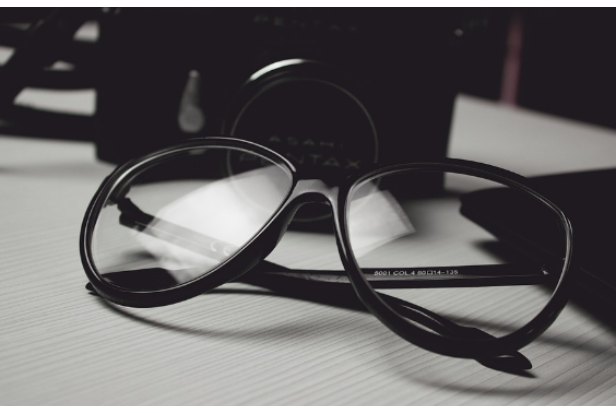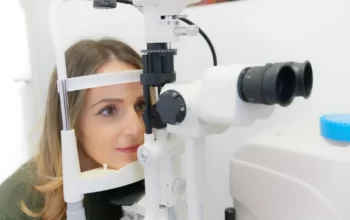
What makes someone require bifocals? What distinguishes progressive lenses from bifocals and how do bifocals function? In the detailed guide that follows, we address these issues and others.
Bifocal Lenses
Benjamin Franklin, a famous inventor and politician, is credited with developing the first pair of bifocals, which have been around since the late 1700s. Anyone with presbyopia had to constantly carry around two (or more) different pairs of glasses until he came up with his clever invention. By simply halving the lenses from two prescriptions and adhering them together to form a single, unified pair, Franklin produced the first pair of bifocals ever.
Since then, bifocals have advanced significantly thanks to improved lens placement, more precise prescriptions, and a smoother lens transition.
Bifocal lenses come in a variety of styles. The best lens type depends on personal preference even though each lens type functions the same.
Progressive Lenses
Progressive lenses are a more contemporary solution for eyewear that needs to be adjusted for various visual fields. Progressive lenses are line-free multi-focals that feature a seamless progression of magnifying power, as opposed to the traditional bifocal lens look with defined vision areas.
The absence of defined lines, a design element that is frequently very appealing, allows progressive lenses to provide all of the advantages of conventional bifocal lenses. Beyond their aesthetic appeal, progressive lenses also address a nagging problem with bifocals: they occasionally cause the wearer to experience “jumping” when switching from viewing a far-away object to a close-up object. Sometimes the brain has to work extra hard to understand the newly adjusted focal length, which can be confusing and/or uncomfortable.
Another distinguishing feature of bifocals is that they only provide a solution for two fields of vision: one on the top half of the lens for distance vision and another on the bottom half of the lens for near vision. Progressive lenses feature a magnifying progression, providing a gradual change of power and clear vision at all distances. As people get older, their presbyopia may worsen, necessitating revised bifocal prescriptions. With a wider field of vision, progressive lenses do away with this worry.
Bifocals Vs Progressive
Bifocals and progressive lenses differ from each other primarily on three points. Generally speaking, progressive lenses provide clear vision at all distances while bifocals only offer vision correction for two specific fields of vision. While progressive lenses offer seamless lens transitions and have no visible lines, bifocals do have a traditional design with lines separating the fields of vision, which is one of their main selling points. Progressive lenses do typically cost more than straightforward bifocals from a cost standpoint. Depending on the type of progressive lenses you select, the price might not increase significantly.

Getting Used to Your Bifocals/Progressives
While it may take a few days or even a week for your eyes to adjust to a new pair of glasses, don’t worry; this process is normal. Progressive lenses and bifocals both have similar functions. Your perception of depth and distance is altered by them. Initial signs and symptoms like headaches, nausea, and balance issues are not unusual. Please get in touch with your doctor if your symptoms don’t go away. Here are a few tips to speed up the adjustment process:
- Wear your new bifocals or progressive lenses all the time and do not switch between pairs
- Make sure your new pair of glasses fits your face and that there isn’t any sliding
- When you walk, be sure to look straight ahead and not down at your feet
- When reading, hold items approximately 16 inches away from your face and look through the bottom portion of the lens
- Just below eye level, adjust your computer screen. You can adjust your chair or desk height to make this comfortable
If you’re still having trouble adjusting to your new lenses after a few weeks, make sure to call your eye doctor. A prescription error or a totally different problem could be the cause of persistent issues.
What’s Right for Me?
Bifocals and progressive lenses are both excellent options for treating presbyopia, in the end. The final choice will depend on your preferences, way of life, and financial situation.
We are aware of your need for comfortable eyewear that fits your way of life. The popularity of progressive lenses over the past ten years has made it possible for wearers to see their best without having to change their way of life thanks to technological advancements.
Wider clear zones are provided by progressive lenses, making it simpler for the wearer to perform tasks like reading and using a computer. Progressive lens technology has improved over the years, reducing the soft blur that existed in earlier designs that caused blurry vision when moving. With more advanced technology, labs are able to reduce the size of lenses required to fit the range of RX, power changes, making progressive lenses more advantageous for people who prefer smaller frames.
FAQs
Common Problems With Progressive Lenses
- Nausea.
- Dizziness.
- Headache.
- Blurred Vision.
- Borderline distortion.
How to Tell If Your Progressive Lenses Are Correct
- Look at something that is at least 65 feet away from you.
- Keep your eyes on the object and lower your chin if it is difficult to see. See if you can see clearly when looking through the upper portion of the lens to determine if your lenses are too high.



